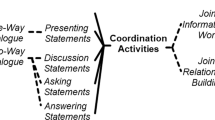Abstract
Colorado, USA, developed the Joint Review Process (CJRP) in 1978 to coordinate the application and review of permits required for major development projects. Since then, the state has used the process on over 20 projects. This study examined whether the CJRP has achieved its primary goals—enhanced coordination of agencies, enhanced public participation, and strengthened communication between agencies and project sponsors— and several related secondary goals. The success of the process was measured through a survey of 54 key people who had been directly involved with the process. Those surveyed included federal and state agency staff, local agency managers, corporate officers, private consultants, and environmental leaders. All groups, with one exception, “agreed” that the process achieved its primary goals and that it should be retained. Environmental leaders were “neutral” about whether the process enhanced public participation and about retaining the process. The report concludes with a review of recommended improvements to and applications of the CJRP.
Similar content being viewed by others
Literature cited
Bingham, G., B. Vaughn, and W. Gleason. 1981. Environmental conflict resolution: annotated bibliography.Resolve, Washington, DC.
Carpenter, S. L., and W. J. Kennedy. 1979.Romcoe case studies.Romcoe, Center for Environmental Problem Solving, Boulder, Colorado.
Center. 1986. Evaluation of the Colorado Joint Review Process. Center for the Improvement of Public Management, University of Colorado, Denver, Colorado, 33 pp.
Cochrane, W. G. 1954. Some methods for strengthening the common chi-square tests.Biometrics 10:417–451.
Colorado. 1980. Colorado joint review process: for major energy and mineral resource development projects. State of Colorado, Department of Natural Resources, Denver, Colorado, 83 pp.
Drtina, R. E., and S. B. Lundsted. 1982. Structuring cooperative behavior under the National Environmental Policy Act of the United States.Environmental Management 6:1:21–26.
Environmental Protection Agency. 1982. Streamlining the environmental permitting process: a survey of state reforms. US Environmental Protection Agency, Office of Policy and Resources Management, Washington, DC, dy230 pp.
Fisher, R., and W. Ury. 1981. Getting to yes: negotiating agreement without giving in. Penguin, New York, 161 pp.
Gladwin, T. N. 1980. Patterns of environmental conflict over industrial facilities in the United States, 1970–78.Natural Resources Journal 20:243–274.
Gladwin, T. N. 1982. The nature of mineral and energy development conflicts and permitting: an overview. Pages 1–23in Rifkin, Baldwin and Associates (eds.), Proceedings of the national conference on coordinated permitting review for energy and mineral resource development, 13–15 July, Keystone, Colorado. Center for Public Resources, Denver, Colorado.
Golten, R. J. 1982. Joint review process: an environmental perspective. Pages 98–101in Rifkin, Baldwin and Associates (eds.), Proceedings of the national conference on coordinated permitting review for energy and mineral resource development, 13–15 July, Keystone, Colorado. Center for Public Resources, Denver, Colorado.
Hamilton, M. S. 1980. The permit explosion: siting new energy facilities in the Western United States. Colorado University, Fort Collins, Colorado.
Kruskal, W. H., and W. A. Wallis. 1952. Use of ranks in onecriterion variance analysis.Journal of the American Statistical Association 47:583–621.
Lesnick, M. T., and J. E. Crowfoot. 1981. Bibliography for the study of natural resource and environmental conflict. School of Natural Resources, University of Michigan, Ann Arbor, Michigan.
Likert, R. 1932. A technique for the measurement of attitudes.Archives of Psychology 140:1–55.
Likert, R., and J. G. Likert. 1976. New ways of managing conflict. McGraw-Hill, New York, 375 pp.
Marinelli, J. 1980. Gearing up for synfuels.Environmental Action 12(5):14–16.
Pascoe, D. M., and A. Poe. 1982. Colorado's joint review process: a step towards greater public-private understanding. Pages 73–86in Rifkin, Baldwin and Associates (eds.), Proceedings of the national conference on coordinated permitting review for energy and mineral resource development, 13–15 July, Keystone, Colorado. Center for Public Resources, Denver, Colorado.
Poe, A. 1983. Coordinated permitting via the joint review process.Public/private: a journal for public/private partnerships 3(3):81–91.
Susskind, L. E., J. R. Richardson, K. J. Hildebrand, and M. A. McCall-Taylor. 1978. Resolving environmental disputes: approaches to intervention, negotiation and conflict resolution. Laboratory of Architecture and Planning, Massachusetts Institute of Technology, Cambridge, Massachusetts.
Author information
Authors and Affiliations
Rights and permissions
About this article
Cite this article
Gallagher, T.J. The Colorado, USA, Joint Review Process: an initial evaluation of its success as a permit reform by key participants. Environmental Management 11, 193–201 (1987). https://doi.org/10.1007/BF01867198
Issue Date:
DOI: https://doi.org/10.1007/BF01867198




